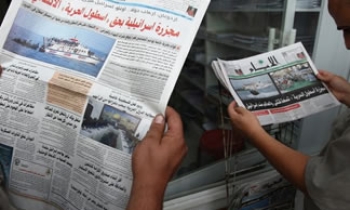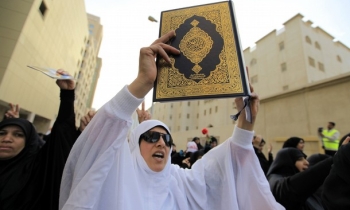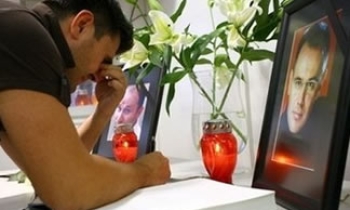Media buying houses across the country are rubbing their hands in glee. The reason: They expect ad space rate in print media to come down in the future. They will now be able to offer their clients, the advertisers, lower rates for reaching out to a larger number of people across several print media options. The new print players have already begun negotiating on reduced ad rates.
Nirvik Singh, president, South East Asia, Grey Global group, confirms: "Yes, the new entrants are already talking to agencies and advertisers, actively scouting long-term deals and commitments."
The static print media market in the country has witnessed hectic activity in recent months. Many new players are entering new turfs to shake the established market players out of their apathy.
While DNA, Hindustan Times and Times of India are slated to slug it out in Mumbai, the southern markets have the Times of India taking on the Hindu empire. Indian Express has recently launched new editions from Kolkata and the Delhi-based Pioneer has started editions from Bhubaneswar, Bhopal and Kochi.
With so much competition, print players are facing rising costs. Shortage of adequately trained manpower with intense competition for it from new mediums such as television and radio have pushed up manpower costs. The cost of newsprint is expected to rise from Rs 500 to Rs 1,000 per tonne. The cost of printing paper is also on the rise. The cost of brand-building and employee retention in an intensely competitive scenario are also set to increase.
This increase in costs comes at a time of revenue streams not growing at the same pace. Advertising revenues contribute up to 80 to 85% of a newspaper’s revenues. With such large dependence, any reduction in ad rates will make a major dent in a newspaper’s bottomline.
This may well be the case. At present, the print cost per target (CPT) is already 20 times that of TV. Most media houses say this will have to come down.
A majority of the advertising industry expects the ad space rates to come down with more print media options in the market. Punitha Arumugam, CEO, Madison Media Group says, "more options increase the scope for negotiation." Preet Bedi, president, Rediffusion DYR agrees: "I think effective ad rates will come down and newspapers will reduce tariffs."
Debraj Tripathy, general manager, Maxus, sees advertising rates being lowered as new players offer more incentives to an advertiser to try them out.
Print industry sources confirm this trend. A senior executive at TOI agrees that special ad prices are being extended to buying houses. Industry sources also confirm that the joint Indian Express and Midday tariff card offers lower than before rates to advertisers for these two publications.
To safe-proof themselves against this price reduction due to competition, newspapers like HT and TOI have formed marketing alliances. This may well turn out to be futile in the long run. CPT, calculated on ad space charges pitted against the newspaper’s audience reach and influence, are the decisive factors for choices on part of media buying outfits.
This will make marketing associations like TOI and HT pointless after a point in time if HT or TOI have a high CPT and are unable to justify it. No advertiser will take it after a point in time.
The larger picture will roll out over a one-to three-year time-frame with subscriber numbers being declared for the new players. As Mr Singh points out, "The new guys will need to establish their numbers before prices see any dramatic change."
At present, advertising industry figures put the country’s ad market at Rs 10,000 crore. Of this, print’s share stands at between 45% and 50%. The growing share of TV, radio, outdoors and other mediums have already been eating into the print media’s share.
In 1994, print had a 62% share of the ad market. The corresponding figure for 2004 stands at 47%. This trend is bound to continue with the emergence of still newer mediums like Internet and mobile phones.
Says Ravi Kiran, managing director-India-West & South, Starcom Worldwide, In the long run, say over a one-three -year horizon, more competition will lead to an increase in the ad investment pie, not necessarily an increasing share for print. In such a scenario, the print media will have to find alternative markets than existing ones.
At present, Mumbai followed by Delhi and Chennai are the country’s biggest ad markets. Going ahead, smaller cities like Chandigarh, Kochi and Bhopal are expected to drive growth.
Says Durbar Ganguly, executive vice-president, The Pioneer: "We are consciously focussing on smaller cities to drive future growth. Our plan is to open 20 to 25 such editions in the next two years." Mr Ganguly also feels that local advertising will be a major source of revenue in future.
Unlike television where the 200 top advertisers account for 90% of total advertising, the top 200 advertisers for print constitute only 44% of the total ad revenues. This spread indicates that players with lower budgets comprise a chunk of print media’s ad revenues. Newspapers are thus already attracting low budget players. Taking this trend forward to rural markets, low-cost local advertisers across categories like education and real estate can tap help local newspaper editions tap more revenue streams.
Further, the National Readership Survey (NRS), 2005, figures puts the total print media reach at 200 million readers. Of this, 98 million are from rural India. Thus, there is definite untapped potential in rural India, already reflected in the faster growth of the language press. The share of revenue of the vernacular press is up from 47% in the late 1990s to 57% in 2003.
Mr Tripathy feels that going ahead, the print media may also have to increase the rate of subscription. He says that advertising revenue can only subsidise fall in subscription rates to a certain extent. Other options may include leveraging organisation infrastructure to provide marketing and communication services, hawker door drops, direct marketing to reader communities, editorial endorsements and more value-added services to readers. Says Pranesh Misra, president & COO of Lowe India, Media companies will opt for invitation price’ offer to woo new readers. I would say that media companies will continue to raise capital through equity to stay afloat in competitive markets.’’
As at the end of all competition sagas, the consumer remains the winner. He gets more options and value added deals. Media planners and advertisers also get more options and deals. Says Mr Singh, I expect the overall quality and profile of readership to improve as well as provide advertisers with a wider variety of sub-audiences given the distinct stance and profile of the different newspapers involved. And rural markets may finally get to be a part of bigger India.









